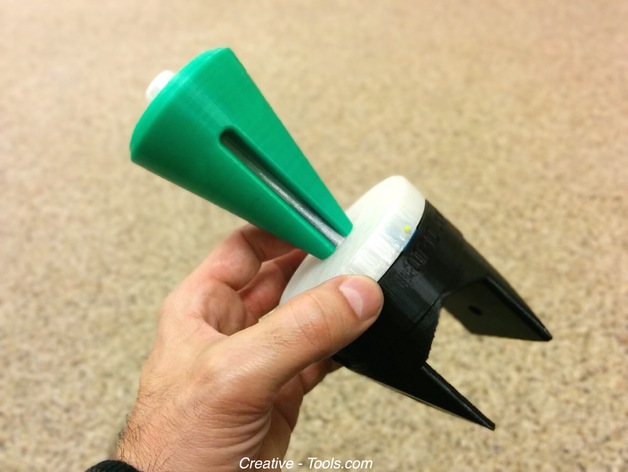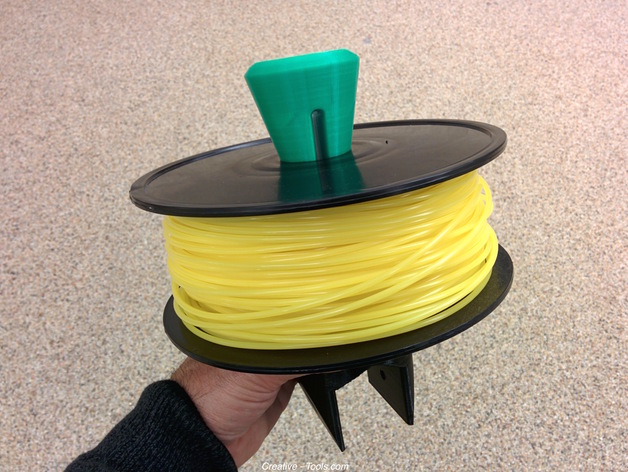As most of us at Creative Tools are 3D-print enthusiasts we understand the everyday issues affecting 3D-print users. One of them is “what to do with loose filament spools?”. It is not unusual to see makeshift solutions for holding them. An old and not-so-reliable method we used to do, was to place the spool standing like a wheel-rim on the floor facing towards the wall (embarrassing!).
We therefore started designing several variations of spool holders. Since such a device has moving parts we designed them with fittings for ballbearings, nuts, bolts and threaded rods. Since we have many different 3D-printers in our portfolio we wanted to make the spool holder stand-alone and able to fit almost any filament-based 3D-printer.
An early version of our spool holder we designed had a four-legged base containing M4 threaded rods as legs, as well as an M8 threaded rod as the central vertical spool axle. See image below:
The challenge - No extra metal parts!
We almost pushed the publish button and released the STL-files for the 3D-printed parts before we realised that it would be much nicer (and more challenging) to design a similar spool holder which only used 3D-printed parts - and still had the same features.
So we went back to the drawing board and started over! Some time and a few iterations later we published our final spool holder. See images below:
Changes make you rethink and improve design
The remaking of the spool holder gave us some insights we did not think of in its first version. The most obvious are the following:
- We decided to make the complete spool 3D-printable on most FFF 3D-printers. This forced us to design several smaller parts which can be snapped together without glue. Each can be 3D-printed on a build-plate as small as 150 x 150 mm - such as found in the Printrbot Simple Metal and Be3D DeeGreen.
- Thin axle - Flat bottom - Centering cone. To make the spool-holder fit most spools on the market we made the rotating axle as this as possible. The spools simply rest on the flat bottom of the axle base. To fix the spool in place and simultaneously centre it on the shaft we use a sliding centering cone.
- Spool-less filament coils can also be used with this spool holder. We designed a three-clawed holder for such loose filament coils.
- Rotating on bearings. We had to think a bit for this one. We really wanted to avoid metal parts and since plastic-against-plastic normally is a big no-no without lubricant, we simply designed a rough roller-bearing-based solution. This offers enough vertical strength and at the same time offers very little resistance. Obviously it is not by far as smooth as a ball-bearing-based design, but we gladly found out that some rotational resistance actually is a good thing. It gives the spool a natural breaking force and thereby we avoid the very unpleasant self-unwinding effect. This is well known for some 3D-print operators who could find the complete filament content of the spool unwound and laying in a bunch on the floor! (think self-unrolling toilet paper!)

Evolution!
After publishing the spool-holder we got lots of feedback and therefore improved on the design. Such amendments are variations of the base which fit the top of the Printrbot Simple 3D-printer as well as RepRap machines with square extruded aluminium profiles.
Another change we made was to create a taller and narrower centering cone which makes some spools stay in place more effectively. All the original and new files are available for download.


As usual all the files are released under a Creative Commons By Share Alike 4.0 license and anyone is free to use them and remix. The files can be downloaded from the following file-sharing sites:
You can watch a video here: https://www.youtube.com/watch?v=X6ArZeWYSZE
Please feel free to comment and suggest! 